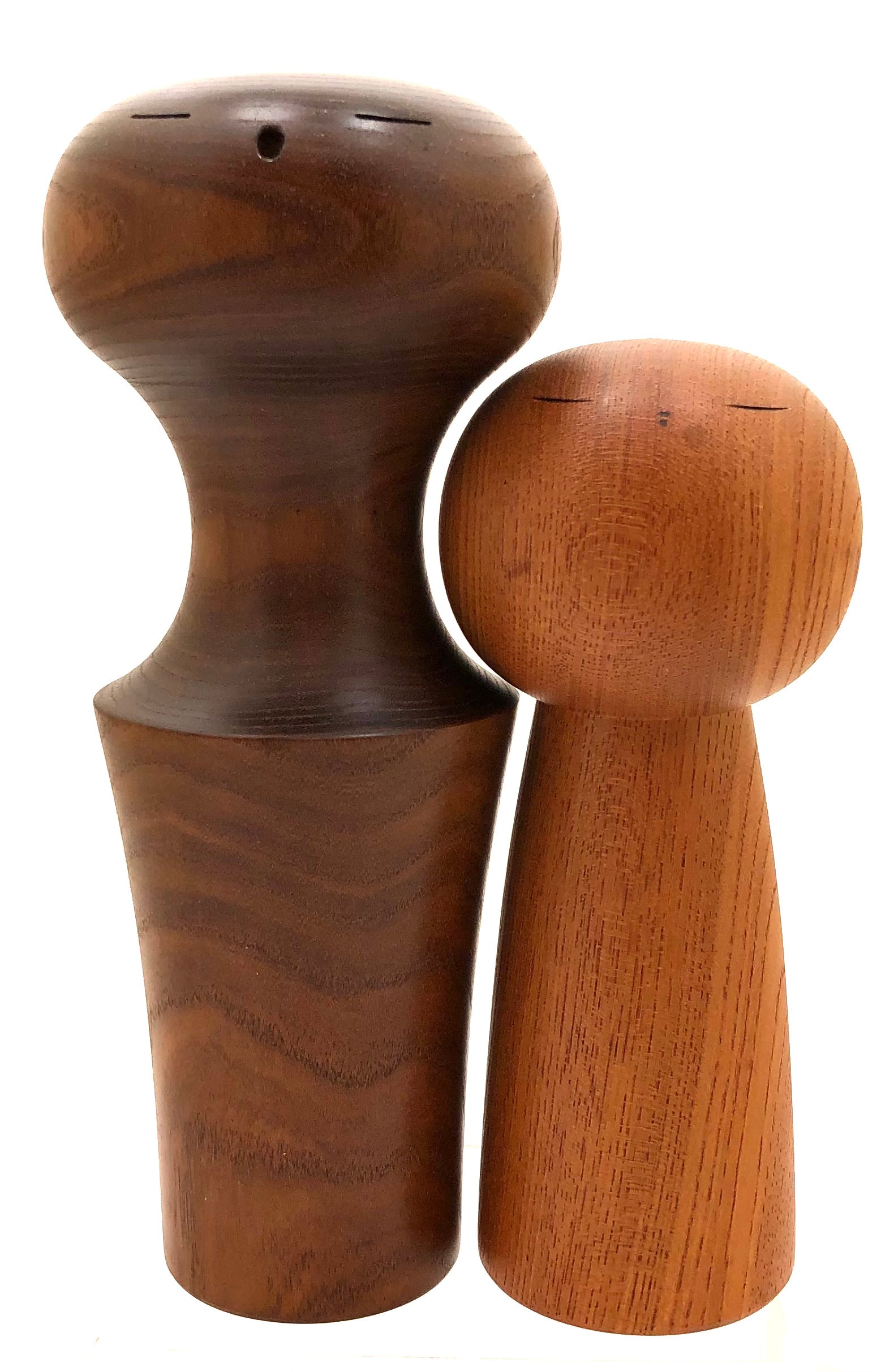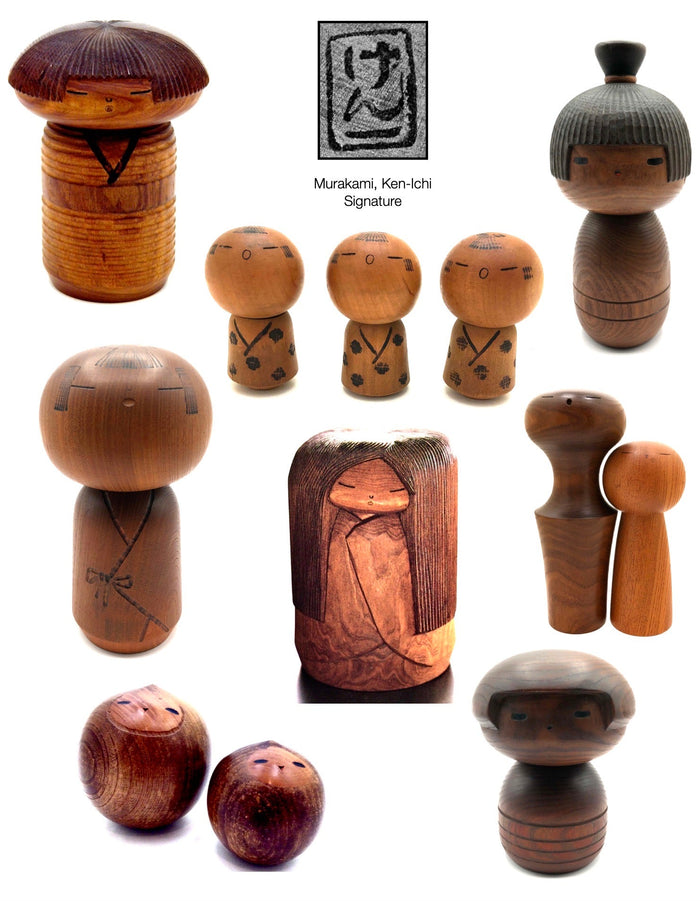

Vintage Sosaku Kokeshi Doll entitled: “Wa | Harmony” by Murakami, Ken-ichi
Dimensions: 9-1/2”h x 6-3/4”h
Each doll shows beautiful natural treatment of the wood, with their individual graining, coloration, and burned detailed. Murakami-san rarely paints his dolls, and if he does, it’s very minimal, other than to define facial features.
In Japan, love between individuals and romantic relationships means accepting a partner for who they are, for who they are throughout their life, no matter what changes. Making the best of every situation is how one achieves personal fulfillment in romantic relationships. This pairing is a perfect example, both by the turning of the forms, and the different colorations of the wood, stressing individuality. Each piece has the impressed mark of Murakimi-san.
Condition: Excellent, original condition, with no fading or loss of color and consistent with age. The piece meets all the standards of collectible Folk Art.

Artisan
Woodworker: Murakami, Kenichi
1929-
Biographical History:
A multi-award winner, Murakami-san was born in Yamagata City. Though his family were well-known wood craftsmen, Kenichi studied oil painting in the early 1940s, but began training and creating Sosaku Kokeshi by 1946. Since 1962, his dolls have received many top prizes including the coveted Prime Minister Award. In 1976, his dolls were exhibited in West Germany and the United States. Today, he operates several galleries in Yamagata Prefecture, including a gallery at the Ginza Matsuzakaya.
Collector's note – descriptive qualities, standard characteristics & ornamentation styles:
He primarily creates dolls with minimal decoration, with an emphasis on a variety of woodworking techniques. Kenichi loved to capture the innocence of a young child and prided himself on producing wonderful, textural pieces created by deep carving and horizontal cut lines to suggest and reinforce the subject. His dolls are seen painted, like illustrating the yukata, or left un-ornamented using simple lines to suggest the use of a snow coat, (Mino) during the winter season. Sumi’-e was often employed to capture the spirit of the subject.
Explore & Learn More about Woodworker: Murakami, Kenichi